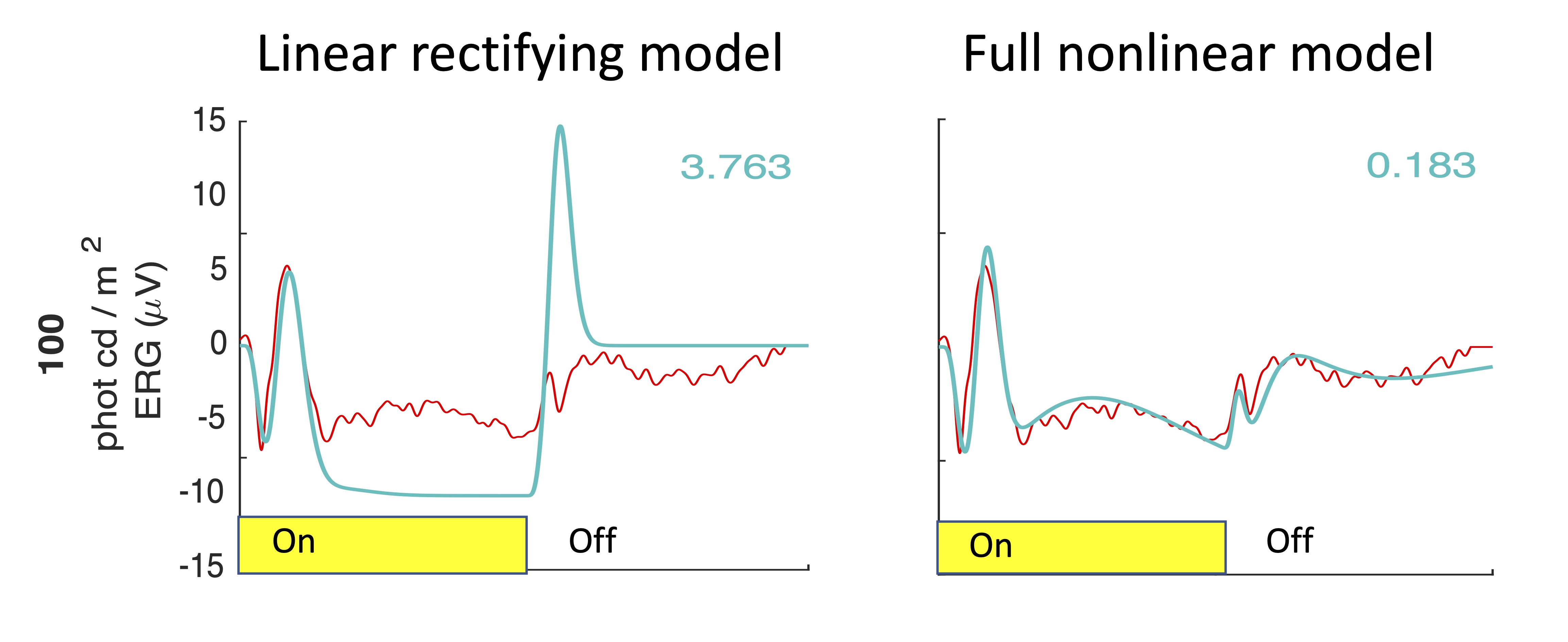Abstract
The electroretinogram (ERG) is a powerful non-invasive assay of the functional integrity of the human retina, providing measures of the retinal receptor potential and the bipolar cell function, together with signals attributable to the inner plexiform layer of the amacrine retinal ganglion cells. An accurate model of ERG dynamics is important for understanding the multifold processes of light transduction to ecologically useful signals by the retina. Methods. Our neuroanalytic approach to modeling the human rod ERG is based on the general principle of a dynamic serial/parallel model of the kinetics of each component contributing to the ERG, such as the receptor potential, the bipolar response, the ganglion-cell response, etc. This approach is now extended from the brief flash response to account for the light-adapted On/Off step response. A direct model with a linear-waveform Off-response is compared with a model incorporating separate half-wave rectifying generators deriving the On and Off bipolar responses. Both models incorporate adaptive gain control of the Off-response amplitude. Results. This new model provides a substantially better match than previous models of rod responses in six different waveform features of the canonical ERG flash intensity series, together with the compound nonlinearities of the On/Off ERG step responses to white light. The comparative analysis shows that the half-wave rectifying model generates an Off-response waveform that is too slow, when combined with the Off-step of the receptor potential. Only the direct form with adaptive gain control can match the dynamic properties of the physiological recordings. Conclusion. The development of an accurate model of the On and Off pathways of the retina provides a substantial step towards improved quantification of any retinal processing deficits than is available from the standard peak statistics of the ERG flash responses.
Conference Name

